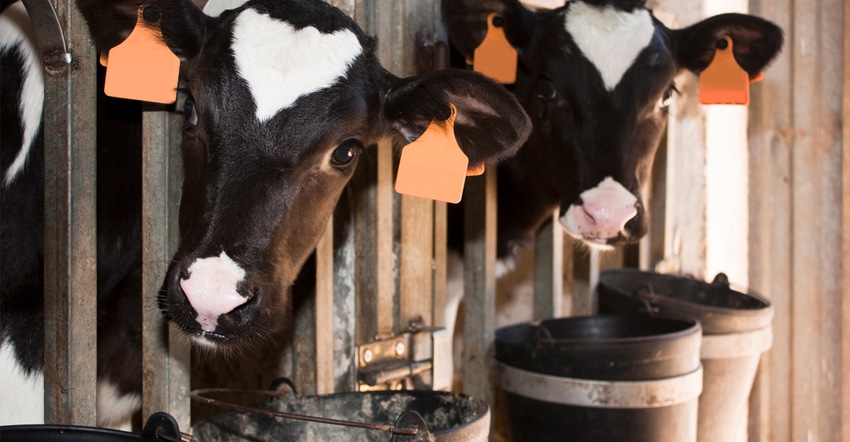
When we think about environmental effects on calves, most people believe cold weather is the main concern. But Lyssa Seefeldt, Extension dairy and livestock agent in Eau Claire County, Wis., says hot summer temperatures, sun, and high humidity can cause heat stress in calves, just as in the milking herd.
Reduced feed intake and increased maintenance energy needs to keep cool can lead to poor growth, higher susceptibility to disease and, in extreme cases, death, she says.
“Heat stress doesn’t just affect the dairy cow; it can affect calves too,” Seefeldt says. “The biggest thing is making sure those animals have shade if they are outside, and new calves are eating adequately so they are getting the nutrition and fluids they need. They can be stressed out fairly easily because they don’t have the body reserves of an older animal, so they may not keep growing.”
Calves experiencing heat stress have elevated respiration rates, Seefeldt says, noting there are a number of other symptoms farmers should be looking for, too.
“Are they drinking a lot of water? Are they doing open-mouth breathing? Are they panting? If we see some of these signs are present, immediate intervention can be helpful,” she says.
Smaller groups
If the calves are group housed, it may be helpful to reduce the number of animals in a group.
“That would allow them to space themselves out a little more and have more access to air movement,” Seefeldt explains.
Hutches can heat up if the hutch is exposed directly to the sun.
“Some farmers provide shade to hutches, or they space them farther apart during the summer to allow air to circulate better during the summer,” she says. “Good airflow helps reduce incidence of disease and keeps calves growing and thriving. Make sure we have the back-door air vents and side windows in the hutch open so they have more airflow.”
Calf housing should be positioned to utilize prevailing winds and should have as many openings as possible to take advantage of natural air movement, Seefeldt says.
According to Penn State University, open-faced buildings should face southeast. Hutches may be turned to face east in summer to maximize air movement and minimize solar heating. Placing hutches 4 feet apart with 10 feet between rows allows air to circulate freely, eliminates calf-to-calf contact, and provides easy access for feeding and cleaning.
Feeding calves earlier in the morning and later in the evening so they can eat and digest their food when it is cooler is important to keeping calves healthy, Seefeldt says.
“It is important to make sure we offer fresh feed at each feeding, make sure we have clean buckets, and make sure we have fly control practices in place,” she says.
According to Seefeldt, the energy requirement for a calf experiencing heat stress is 20% to 30% more than normal.
“So, make sure you increase the volume of feed and/or milk to make up for the extra energy they are expending,” she explains. “It does take more energy to pant to keep themselves cool. More frequent, smaller meals are an important way to prevent calves from losing weight, so just adding one extra feeding can make a difference. The important part is they need added nutrition to keep them growing when they are walking around trying to keep cool.”
About the Author(s)
You May Also Like






